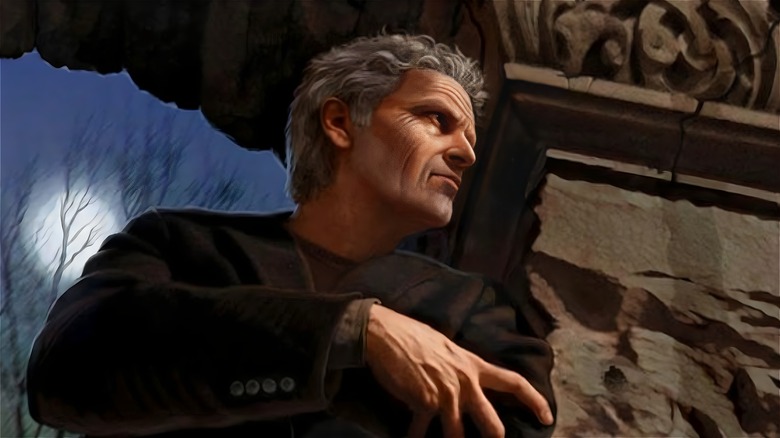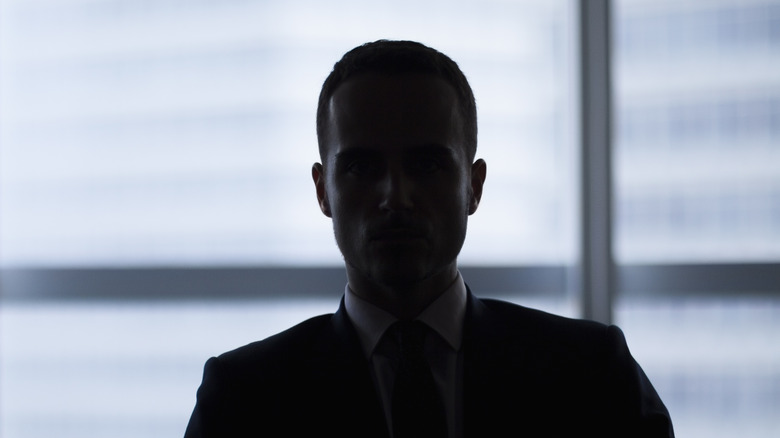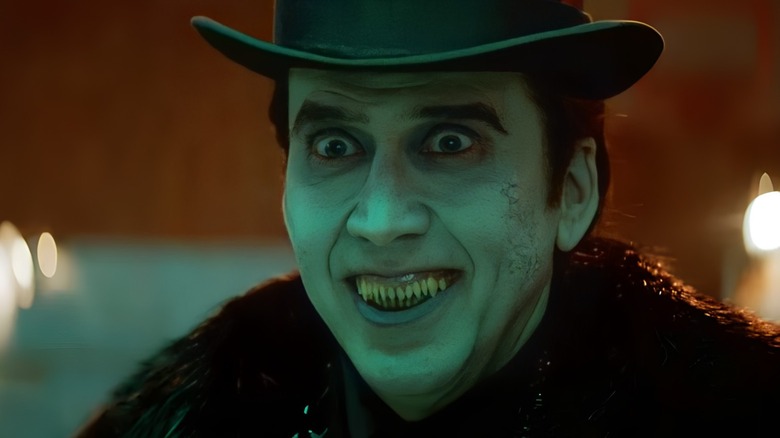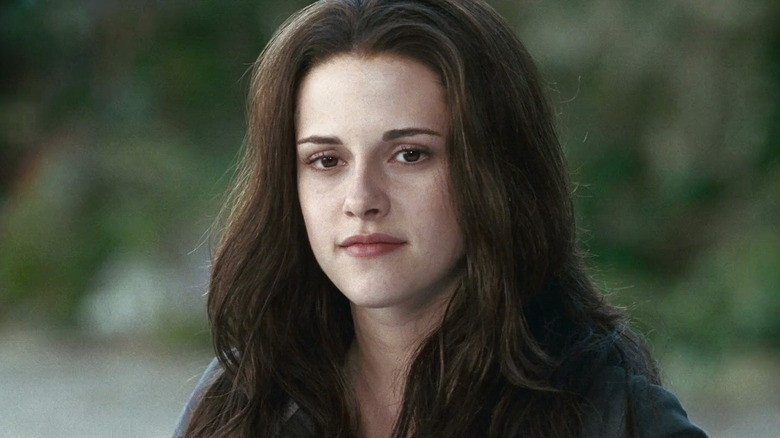Twilight Is So Yesterday - The Vampire Tapestry Should Be TV's Next Big Bloodsucking Series
Vampires have been having a big pop culture moment for quite a while now. Every few years, the bloodsucker genre rises from its coffin to a new round of film and movie mayhem, and 2023 is no exception. From the Dracula-on-a-boat terror of "The Last Voyage of the Demeter" to the announcement that "Twilight" is getting rebooted as a TV series, the entertainment industry is once again bringing you vampires that range from leathery and horrifying to sparkly and pretty.
And why not? Yes, people will absolutely be watching a new "Twilight" show (and dream casting it). Still, while it's perfectly understandable that studios want to lean on tried-and-tested IP, "Twilight" already had its moment in the spotlight, and it's high time to clear the floor for a new contender that, like any vampire worth its salt, has been patiently waiting in the shadows for over four decades.
That game-changing vampire entry is Suzy McKee Charnas' 1980 novel "The Vampire Tapestry," which offers a truly novel take on the subject of bloodsucking supernatural villains. While it's currently on the obscure side, this book's inventive plot and storytelling techniques give it all the makings of the next big vampire TV show.
The Vampire Tapestry tells its story from a unique angle
Lots of vampire stories play out as a combination of gothic romance (for whoever falls for the vampire) and pure horror (for pretty much every other human character, who encounters what from their viewpoint is a blood-sucking monster). "The Vampire Tapestry" chooses to expand on the theme. It explores its central and only vampire, Dr. Edward Lewis Weyland, from multiple viewpoints, which paints a well-rounded picture of an all-too-fallible monster who tries to keep up appearances but is mostly just struggling to survive.
"The Vampire Tapestry" features Dr. Weyland as, mostly, a protagonist — in the sense that he's the central thread that connects the five novella-length stories within McKee Charnas' tale. The first three are all told from different human characters' viewpoints, and their various interactions with Weyland slowly unfold the mystery around the vampire and the extent of his abilities. Finally, after the character has been soundly established, the last two chapters allow Weyland himself to become the viewpoint character.
This unique approach offers deep insight of a truly one-of-a-kind vampire who's far too dangerous and predatory to be relatable, yet struggles with his own issues, and even goes to therapy. All in all, his general vibe is far closer to Hannibal Lecter than Count Dracula, which is a pretty neat twist to the usual vampire mythos.
Dr. Weyland is not like Dracula, Lestat, Edward Cullen, or other vampires
From Dracula to Edward Cullen, pop culture vampires come in many shapes. However, as sparkly or Jared Leto-y as they might be, they're still all ultimately pretty hardcore — being, you know, immortal bloodsuckers. Dr. Edward Lewis Weyland is cut from a different cloth. As a tall, handsome, haughty man, he very much looks the part, but has none of the traditional vampire skills or weaknesses.
Instead of biting, he has to extract blood with a needle appendage under his tongue. Weyland can be weakened, and since he can't transform into a bat or mist, he must flee if he's ever caught. His eternal life requires him to periodically enter a lengthy hibernation period that costs him his memories, which means he has to start figuring out his life anew every single time he comes to his senses. Instead of stalking maidens in their bedchambers, he runs opportunistic schemes — like running a sleep experiment lab to feed on the dozing test subjects secretly — or goes after easy victims, specifically from disenfranched and marginalized groups.
As dangerous as he is, Weyland is far from invincible. In fact, he spends large chunks of "The Vampire Tapestry" getting his immortal rear handed to him in a number of ways, from exposure and intellectual defeats to blackmail and outright captivity. His day-to-day life even has some borderline ridiculous difficulties. Weyland gets massive indigestion if he doesn't rest after feeding, and there's a very good reason why he works as an anthropology scholar: Because his dormant periods can last for generations, he has a lot of adapting to do in order to pass for a human in the era he wakes up in.
The Vampire Tapestry turns the damsel in distress trope on its head
With this odd combination of murderous, humanity-hating monster and tormented Byronic character, the peculiar Dr. Weyland is obviously the star attraction of "The Vampire Tapestry." However, what makes the story so intriguing is the way others interact with him. Thanks to the all-consuming, irresistible nature of his hunger, Weyland keeps dropping his professorial facade over the course of the five stories, and as a result, he ends up in compromising situations. In the stories, his own role is in constant flux, as the changes in viewpoints and circumstances present him in various lights.
Interestingly, some of Weyland's biggest and most challenging conflicts are with the kinds of characters that more traditional vampires tend to use as their main food source. The women in "The Vampire Tapestries," you see, are no scream queens or damsels in distress. Instead, the two main female characters, Weyland's college colleague Katje de Groot and his therapist Dr. Floria Landauer, are fully realized and complex characters who both investigate the vampire, and in their own ways, prove to be formidable challenges to the immortal predator. As a result, both de Groot's chapter "The Ancient Mind at Work" and Dr. Landauer's "Unicorn Tapestry" are intriguing twists on — and, occasionally, deconstructions of — the cat-and-mouse theme, and things get far more cerebral than you'd expect from a vampire story. "Unicorn Tapestry," in particular, is essentially a psychological horror version of the therapy sessions in "The Sopranos," which would make just as awesome TV as it sounds.
With its endless possibilities for adaptation and even expansion, "The Vampire Tapestry" is practically begging for prestige TV treatment. Dr. Edward Lewis Weyland might not be the vampire we're used to, but he's definitely the vampire we deserve.



